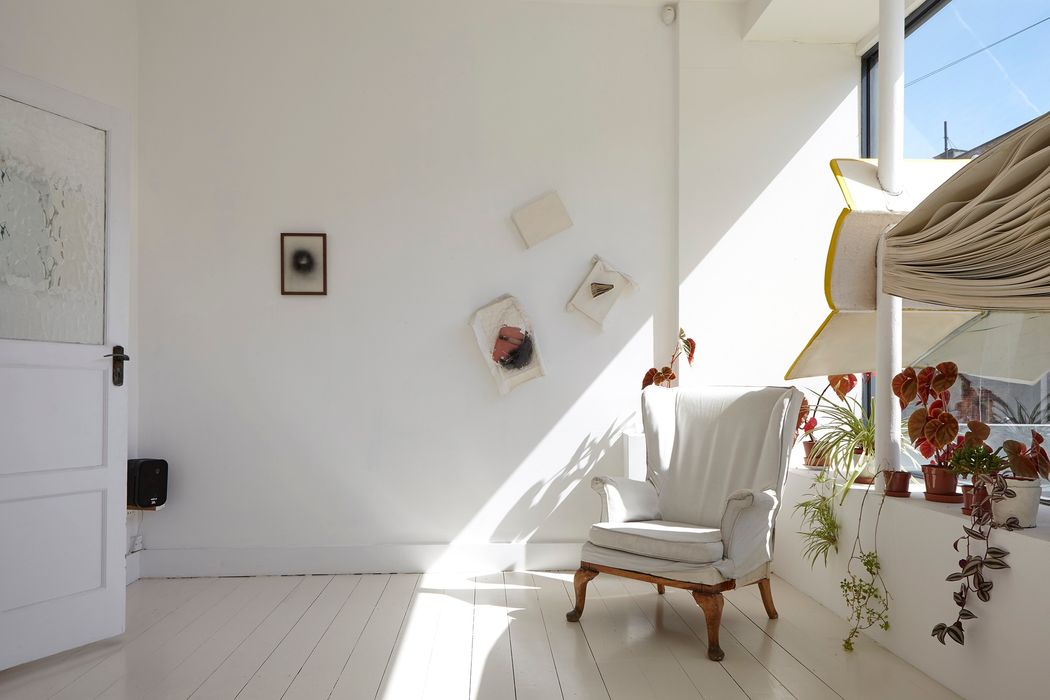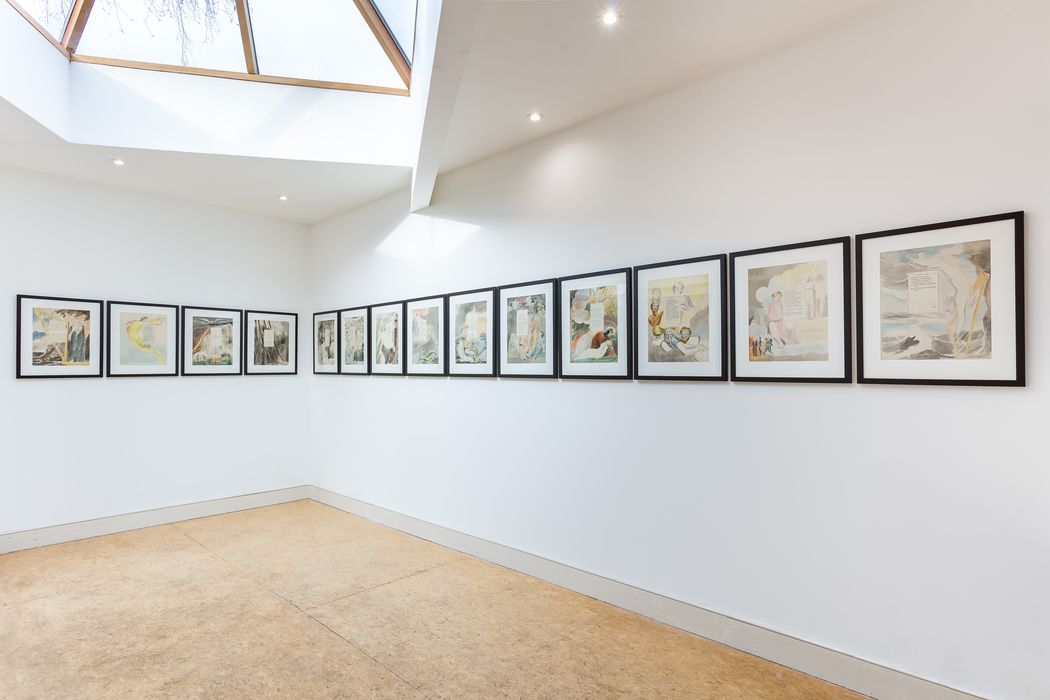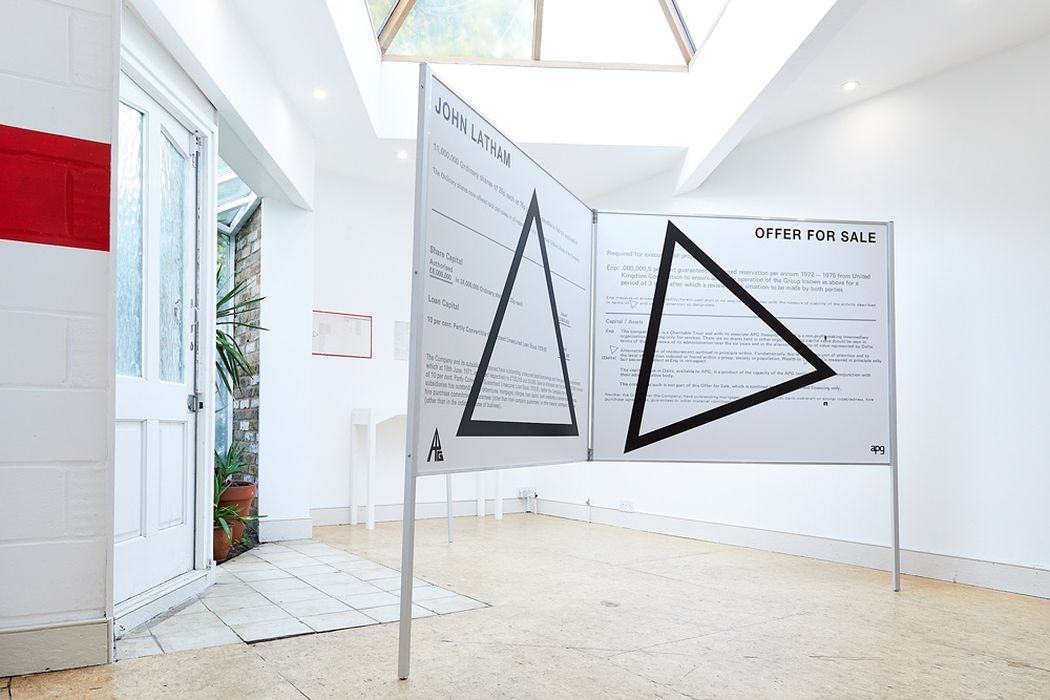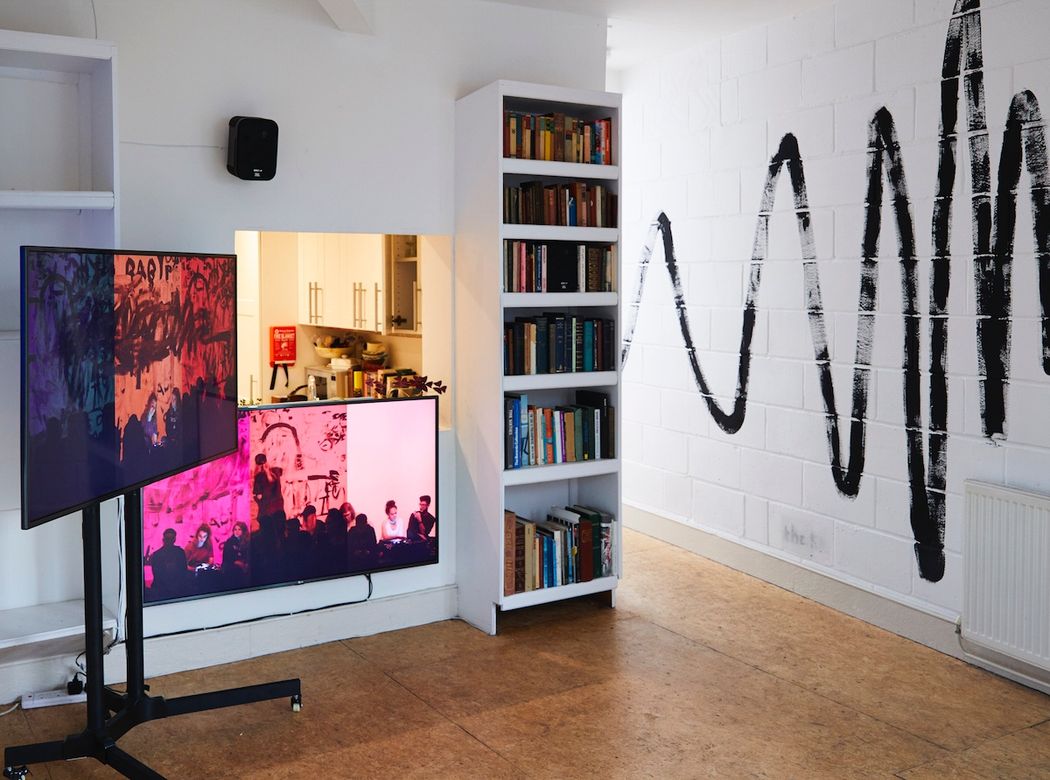“The physical space isn't the most important aspect”
An interview with Gareth Bell-Jones, Director of the Flat Time House in Peckham, London
The Flat Time House (FTHo) in Peckham, South London, is a particularly unique studio museum. Based in the former studio-home of the conceptual artist John Latham (1921 - 2006) the house itself is actually one of Latham's artworks. When thinking about reopening FTHo offers a unique experiment in thinking about what a studio museum actually is. Here, museum Director Gareth Bell-Jones, squares up to the idea of a studio museum without the studio, how to foster the feeling of engagement you experience in a museum space virtually and what it's like to work on a project where you have no idea what the final result will look like.
_
Molly Skinner, Network Co-ordinator: It would be great to get an idea of what FTHo had in store for us before Covid-19 closures.
Gareth Bell-Jones, FTHo Director: At the moment when we realised that we were going to go into lockdown - when we made the decision on the 13th of March that we had to close and postpone everything - at that point we had just completed a development to the rear of the building. We converted an out building into studios and the large book sculpture that goes through the front of FTHo was at the fabricators in the process of being restored. It was due to go back in to be installed a fortnight later but obviously that's been postponed - so at the moment we don't have our giant book.
We had planned an exhibition to launch that restoration and that was with the curator David Thorpe who used to be the director of South London Gallery and worked very closely with John Latham - the artist who used to live in the house. He had an exhibition planned which was looking at an examination of the book sculpture using Harold Rosenburg's idea of the anxious object including work by contemporary Czech artists.
All of this was in place and I remember on Thursday the 12th of March I was actually at the Czech embassy to negotiate something to do with the work coming over and they said “ok well, they've just closed the border, so I guess we don't know what we're doing with that."
-
“Well, they've just closed the border, so I guess we don't know what we're doing with that"
-
The upshot has been that we haven't been able to do that exhibition, we haven't been able to open the studios, I haven't been in FTHo since the 20th of March.
But because of the unique status of FTHo we always have someone inhabiting it so we've been able to continue working with the archive and to access the resources that we have in there whilst I've been working remotely. We also have a separate entrance and so we've been able to begin again with continued digitisation of the archive and research.
We're planning a 'by appointment' exhibition for September which will include works we have on site at FTho. We were successful with an Arts Council emergency grant which has given us funds to develop a new digital platform and we received a Paul Mellon research continuity grant which has meant that we've been able to fund our programme through into 2021
So at the moment we're just kind of on hold and then we're starting again in the Autumn - tentatively.

M: Other than postponing, have the closures affected your work then? It's great to hear you've been able to continue so much of it.
G: We've been working remotely. We're a small team so that hasn't been too difficult to negotiate. One aspect which has completely changed is that we do a lot of educational work, including a programme with the Chelsea College Curating MA. Normally they're doing a lot of workshops with FTHo and working directly with the physical archive but we had to find a way to work on this project remotely.
As a result of this, it sped up some of the conversations we've been having about our programming.
FTHo closed temporarily in 2016 and at that time we had to make some decisions about whether it was viable as an institution without the physical space.
It was decided that because of the conceptual underpinnings of John Latham's thinking it was perfectly logical to proceed as an institution without a physical space.
John Latham believed that the universe was structured according to time rather than space and so we felt there was a logic to proceeding with our activity without necessarily being in this building. It would have been really interesting to think about what FTHo actually was without there being the physical house.
-
"We'd already done quite a lot of consideration around what it would mean to be an institution without the physical space"
-
So we'd already done quite a lot of consideration around what it would mean to be an institution without the physical space. Because of this crisis it's accelerated some of that thinking and with the grant from the arts council we are proceeding with developing a kind of parallel platform to the institution, a kind of online platform.
We've brought in a digital producer/curator and a coder/producer and they are working with us to create this new platform and we've set up an open call for artists. Together they will help construct this new way of interacting with audiences. What we're trying to do is not create a space for delivering content that's produced elsewhere or netart projects. We're trying to find a new way, appropriate to our institution, where the projects that we commission are contextualised in a wider discourse.
So it might be that in the future we're able to proceed with online exhibitions where the type of experience that the audience would have would be more akin to the kind of experience of being at an exhibition at FTho. Not in terms of the physical experience of being in the house - it's not intended as a kind of 3D virtual equivalent of being in the space - we're thinking more in terms of the type of attention a visitor would have, the type of interaction.
It's a kind of complex project in terms of its ambitions, but we want the actual outcome to be very intuitive and very simple. What we don't want is to purely engage with people who are interested in these kinds of digital outcomes. We want it to be available to use by anyone and we want to be able to work with anyone.
So this open call in particular is focused on artists who would normally find it difficult to visit the archive at FTHo: either because of disability, caring responsibility, health issues or pure proximity. A third of our audience online, visiting the website or newsletter, are based internationally - so we have this large audience who aren't able to visit the space and we want to work with those audiences: to engage with them in a way that would be akin to visit the space.
We don't actually know what that's exactly going to be like yet but we will be working on it until the autumn and then the idea is to embed that online programming into everything we do in the future so that if we do an exhibition we might be able to host something on this platform as well.

M: That's really fascinating, I think for me a lot of the virtual visits and online exhibitions we've been seeing during this time have leant more towards recreating the space of an exhibition and there's been some criticism online about the fact that you can't actually do that. Personally I think the ones that I enjoy the most are revelling in their own form. It's really interesting to think about recreating the attention in the gallery rather than the space.
G: It's kind of tricky because there's nothing to describe. It's particular to the nature of our institution, because the building of FTHo is an artwork by John Latham but it's not actually the bricks and mortar of the space that constitute that artwork - it's the activity which takes place within. That's part of the reason why someone has to live in the house there because otherwise it wouldn't be the work.
-
“The actual physical space isn't the most important aspect of what FTHo is, it isn't actually the building and so we're trying to translate those types of experiences in another way"
-
It has to be lived in, it needs to be a domestic space, it needs to be a space for administration and what John Latham called 'reflective intuitive thought.' The actual physical space isn't the most important aspect of what FTHo is, it isn't actually the building and so we're trying to translate those types of experiences in another way. We think we can do that and we think that it actually might not be that complicated.
As part of the first of three commissions we're deliberately commissioning an artist of an older generation because we don't want this to be focused at young artists or audiences that are already totally embedded in this digital realm, we want to be able to make this accessible to everyone. In the future we want to be able to potentially work with audiences and artists who might be based anywhere in the world so that we can - in a more affordable way - work with an artist who might be based in Argentina or Japan.

M: I feel a little like you've preempted my questions and also made the questions about space slightly redundant. I was wondering what your biggest challenge was in planning for reopening, it sounds a little bit like the challenge is thinking about reopening in a different sense - I'm not sure if that question fits anymore?
G: I suppose it's fairly dependent on what constitutes reopening. Because we have remained active whilst the physical space has been closed and we have been continuing with our engagement projects. We're just beginning one of our education programmes “constellations" and that is a programme for artists who work with social political subjects or in a socially engaged manner. That's Just been going on anyway behind the scenes.
In terms of reopening the physical space, because, and I imagine this is the same with many other house museums, it's a small awkward space so social distancing isn't really going to be very practical. We are planning to open by appointment first as I said earlier and not planning any major events in the space itself. Partly because we might not be allowed but also partly because we think that some of our audiences might not want to do that. We have a lot of older visitors and we don't want to alienate parts of our audiences.
I suppose a regular challenge is funding. We're not a regularly funded institution - we rely on project grants and so we've had to do quite a lot of fundraising - fortunately we've been successful so far. I suppose it means normally we'd have a lot of people visiting the space and just being in the space and that's something that we haven't been able to do - so we've been thinking of new ways to engage.
-
"We should not be a static institution, we should always be changing and reflective of the context we find ourselves in - it just so happens that the context we find ourselves in means a major change for everyone"
-
M: So how will your museum experience be changed? It seems like your museum experience will be changed because you're rethinking what a museum experience is.
G: Yeah to some extent. We've never been a traditional museum and that's something we've always wanted to challenge. We're thinking about what the most appropriate iteration of an institution should be for the legacy of an artist like John Latham - which is intended to be constantly changing.
We should not be a static institution, we should always be changing and reflective of the context we find ourselves in. It just so happens that the context we find ourselves in means a major change for everyone.
I think one of the benefits is that we're a very small institution despite doing a lot. It's easier for us to be experimental because our audience expects that from us - we're expected to be challenging these kinds of models. So we're able to take a chance on certain things which may not work out and it's not the same kind of risk that a medium sized organisation or an institution with a bigger turnover. If it doesn't work it's not the end of the world, we'll still keep going in our small little way.

M: That's a real freedom I think that a lot of institutions don't necessarily have.
G: One of the main things is that we don't rely on revenue, earned income, we don't have ticketed shows and we don't charge for entry. We sell books and editions and things like this but they barely cover the cost of their own production so revenue generation isn't a big aspect of our own fundraising. The institutions that seem to have been hardest hit by this are those institutions which really depend on that revenue. In a way we've been able to be a bit more flexible.
Where we have been hit is by not being able to open these new studios and we had a patrons scheme ready to launch and now just doesn't seem like the best time to do that. We were hoping to raise quite a substantial amount more revenue by launching these programmes this year and that's all been put on hold but it hasn't affected our current standing.
M: My last question is really, what are you excited about for the year ahead?
G: We've got an exhibition in september which we're putting together at the moment which doesn't yet have a title but will be dealing with some of John Lathams clashes with authority - so for instance the work Distress Over Parliament where he shot flares over the top of the houses of parliament and some of his more deliberately controversial actions.
One thing, the main focus of our programme for the upcoming year is looking at language so we'll be having a librarian in residence who will be working on cataloguing a number of books by John Latham. We'll be hosting a number of events with artists who use language as the main medium of their work. Through into 2021 we have a number of shows which have this as a theme.
We're actually going to be incredibly busy.
-
“We've always been heavily weighted towards access and we're trying to use this as an opportunity to engage with people who wouldn't normally have been able to work with the archive or come to FTHo"
-
M: It definitely sounds full! I'm really excited to see the result of this residency programme and online experience that's in process.
G: So am I - I've got no idea what it's going to be like.
As an archive you have to decide on a position where you're situated between conservation of the materials and access. We've always been heavily weighted towards access and we're trying to use this as an opportunity to engage with people who wouldn't normally have been able to work with the archive or come to FTHo.
That's where I think this time has been really useful for us as we can start working with people who are interested in the ideas and space but wouldn't normally be able to visit. So this pandemic has forced us to do something we were wanting to do but the normal needs of the institution take over - this has allowed us to really focus on trying to make the space more accessible.
Gareth Bell-Jones is the Curator/Director of Flat Time House, a gallery and archive in the former home of post-war conceptual artist John Latham. He has recently written catalogue texts for artists including Laure Prouvost, Marlie Mul, Barbara Visser and Agata Madejska.
